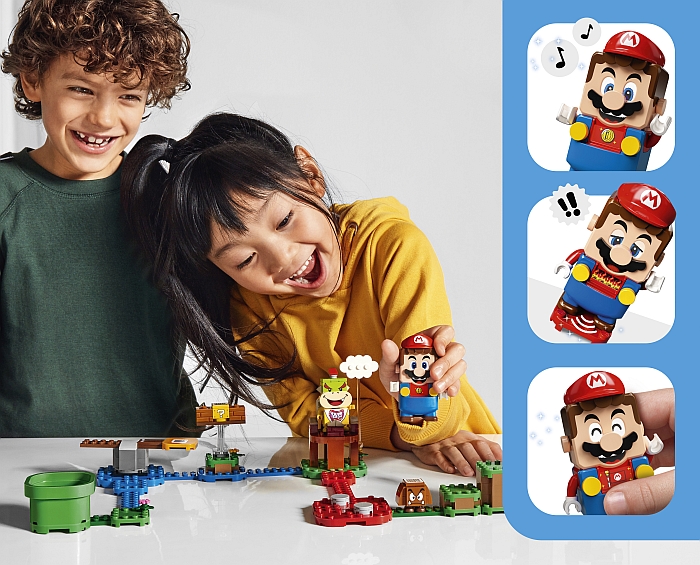I made an accidental discovery a couple of weeks ago when I placed an order from the Online LEGO Shop. LEGO has two new very unique and unusually beautiful keychains. The #853993 LEGO Iconic 2×4 Bright Blue Key Chain features an iridescent 2×4 LEGO brick that shimmers when viewed from different angles, and the #853992 LEGO Iconic 2×4 Black Metallicized Key Chain features a 2×4 LEGO brick with a metallic shine. Because LEGO included some really bad pictures with both of these key chains at the Online LEGO Shop, it is very easy to overlook them, so below, I will show you their real beauty.
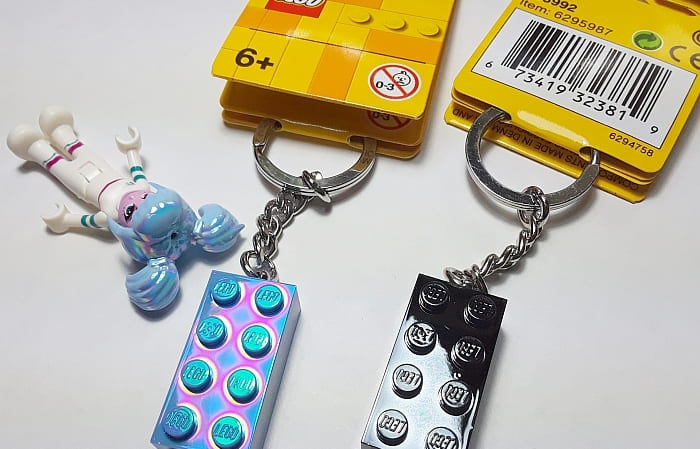
Here are the images LEGO is using for these key chains at the Online LEGO Shop. As you can see, they just look like regular blue and black 2×4 bricks. It’s only in the description of the key chains is where you notice that they have unusual characteristics.
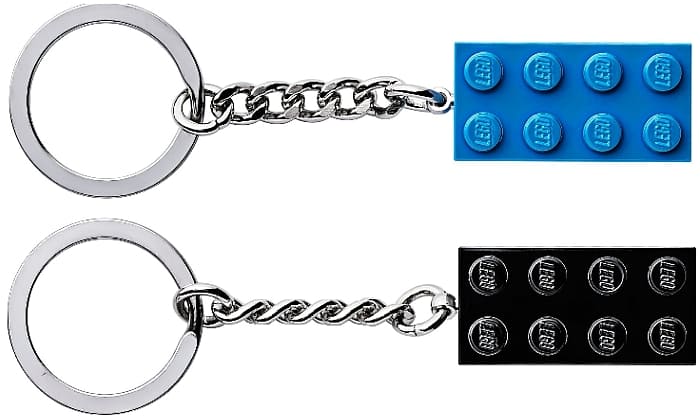
The #853993 LEGO Iconic 2×4 Bright Blue Key Chain has a very similar look to Sweet Mayhem’s holographic hair, so I photographed them together. Both pieces have an iridescent coating that makes them shimmer and glow when hit by light. The difference is that while Sweet Mayhem’s hair is bright-light-blue under the holographic coating, the 2×2 brick has a medium-blue base color. To make this more confusing, LEGO calls BrickLink’s medium-blue bright-light-blue, and BrickLink’s bright-light-blue is light-royal-blue for LEGO. The bottom line is that Sweet Mayhem’s hair is a lighter shade of blue than the 2×4 brick.
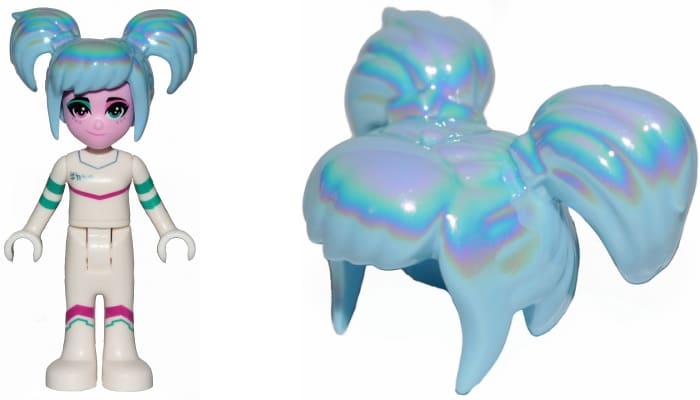
When you look at the #853993 LEGO Iconic 2×4 Bright Blue Key Chain in low light conditions, it looks like a 2×4 medium-blue brick with a slight shimmer. You can see this on some of the images I included. But when the brick is hit by a light-source it has an intense and bright glow, similar to holographic images. The glow is especially strong on top of the brick around the studs, but the iridescent coating is also applied to the sides, so there is some glowing effect there too. The underside of the brick is regular medium-blue with no glowing effect.


The #853992 LEGO Iconic 2×4 Black Metallicized Key Chain is less spectacular, but still very beautiful. It’s hard to capture such a dark and shiny piece on pictures, but it has the same black metallic chrome finish that LEGO previously used in the #4547551 LEGO Chrome Darth Vader promotional polybag from 2009. So, we could consider this a 2×4 Darth Brick keychain, or Darth Vader in disguise! The top and sides of the brick are coated with the chrome finish, but not the underside, which is just plain black.
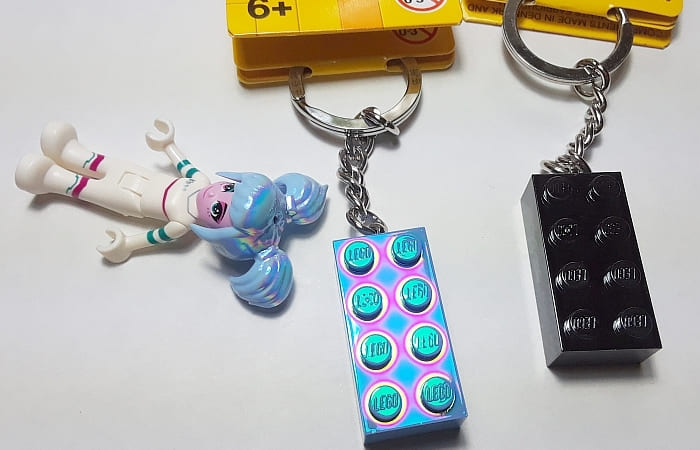
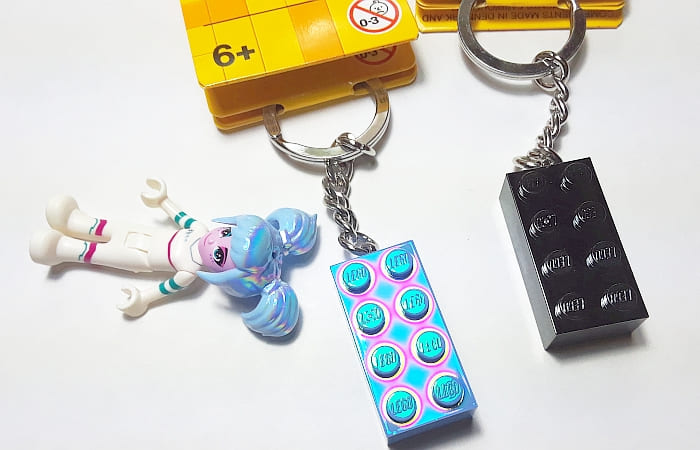
Just like all LEGO key chain bricks, both of these special key chains are attached to a durable metal ring and chain, so you could definitely use them to keep your keys safe, or fasten them to bags. Keep in mind that if you do use these as actual keychains, the iridescent and chrome finish will eventually wear off. I personally will just keep them with my LEGO color collection as some of the coolest LEGO 2×4 bricks.
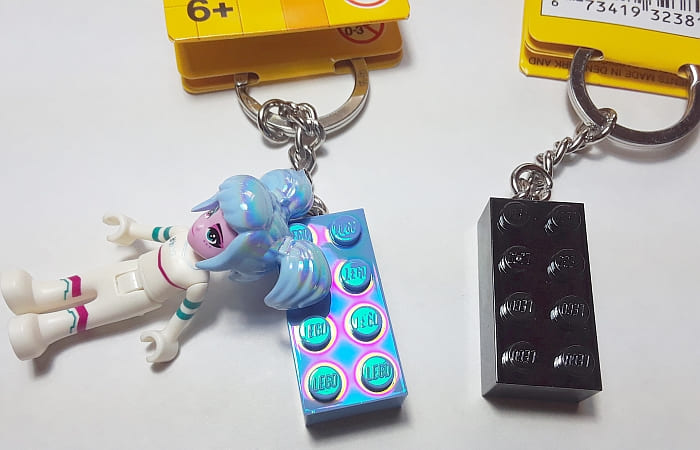
I love both key chains, and I’m super happy that I got them. If you are interested to check the #853993 LEGO Iconic 2×4 Bright Blue Key Chain and the #853992 LEGO Iconic 2×4 Black Metallicized Key Chain, they are available at the key chains section of the Online LEGO Shop.

What do you think? How do you like these special 2×4 key chains? Are you planning to get some, or do you have them already? Feel free to share and discuss in the comment section below!
And you might also like to check out the following related posts:




